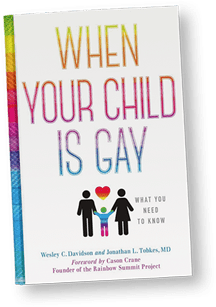Alarming Statistics From Centers for Disease Control
Did you know that:
• 1 in 4 new HIV infections occur in youth ages 13 to 24.
• About 60% of all youth with HIV do NOT know they are infected, and are not getting treated, and can unknowingly pass the virus on to others.
• About 50,00 people are infected with HIV yearly.
Talk To Your Kids About Being Safe
• Discuss with your child about how HIV is transmitted and how it can be prevented. There may be misconceptions about the virus. Below are links for you to be informed.
• Use condoms always.
• Get tested. It’s the only way to know if you or a partner has HIV. Test for other STIS also.
What Are You Testing For:
• HIV antibodies, p24 Antigen (substances found on a foreign body or germ that trigger the production of antibodies in the body.) Testing can take several months for detectable levels of HIV antibodies. Consequently, your child should be tested every 3-6 months if sexually active.
• For accuracy, test should be done after the window period, term used to describe period of time between HIV infection and indicators of HIV infection showing up on tests, such as antibodies and antigens. Talk to your doctor about when to take the test. Different types of tests have different window periods.
Types of Tests
• Tests use either saliva or blood samples.
• FDA approved in 2012 an on-line kit for home sampling. Advantages: privacy, rapid test results, usually 20 minutes. Disadvantages: Positive result must be confirmed by blood test conducted by healthcare worker in a clinic. The healthcare professional will explain what results means and if positive, the next course of action re: treatment.
Places of Testing:
• Hospitals
• Health clinics
• Doctors Surgeries
• Specialist HIV/AIDS voluntary counselling and testing (VCT) sites.
• It is recommended that an HIV test be carried out in a healthcare setting.
New Drugs to Combat HIV
• PrEP, sold under the name Truvada, is an HIV medication taken by someone who is HIV negative to stop them getting it. It has proven to be effective, both as a daily pill and as a pill taken just before sex. Must be used for 7 seven days to be effective and is intended for high-risk people. Not 100% effective. Been in use since 2004.
• PEP, or post-exposure Prophylaxis, is an emergency medication that can prevent HIV infection. It should be started as soon as possible before 72 hours after sex. It works by stopping HIV from making copies of itself and spreading through out your body. It should be started as soon as possible and must be taken for 28 consecutive days. Not 100% effective.
What You Can Do to Help Stop AIDS
• December 1st is World AIDS DAY, established in 1988 by the World Health Organization.
• Recommit to addressing HIV/AIDS, a disease that affects approximately 35 million people worldwide.
• U.S. Government’s theme this year is “Focus, Partner, Achieve: An AIDS-free Generation.”
• Nationwide, youth have been joining Facing Aids photo-sharing initiative.
• There’s a video on blog/aids.gov/2014/11/world-aids-day-2014-resources-for-a-shared-effort-towards-an-aids-free-generation.html.
• Learn and share the facts on youth and HIV using Facebook. Use World AIDS Day poster to make Facebook cover art.
• Share images from AIDS gov Instagram page.
• Keep the conversations going with tweets using #WAD 2014.
Useful Web sites:
• http:/AIDS.gov blog
• http://Prep Facts.org
• http: //www/cdc.gov/vital signs/ HIV Among Youth/index.html
• http://www.avert.org/hiv-testing.html

When Your Child Is Gay: What You Need To Know
For more detailed advice, see book, co-authored with a mother of a gay son and a psychiatrist, Jonathan L. Tobkes, M.D.